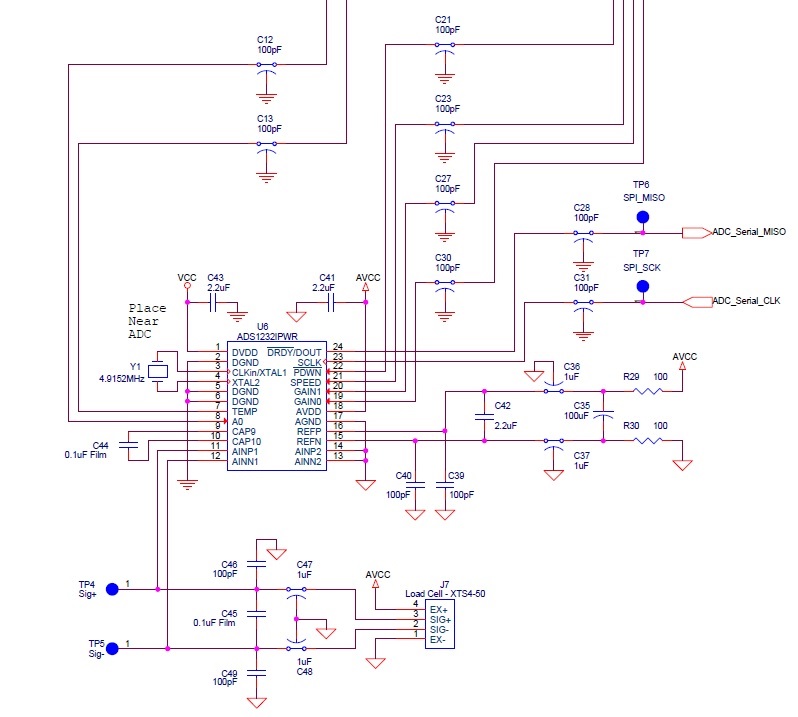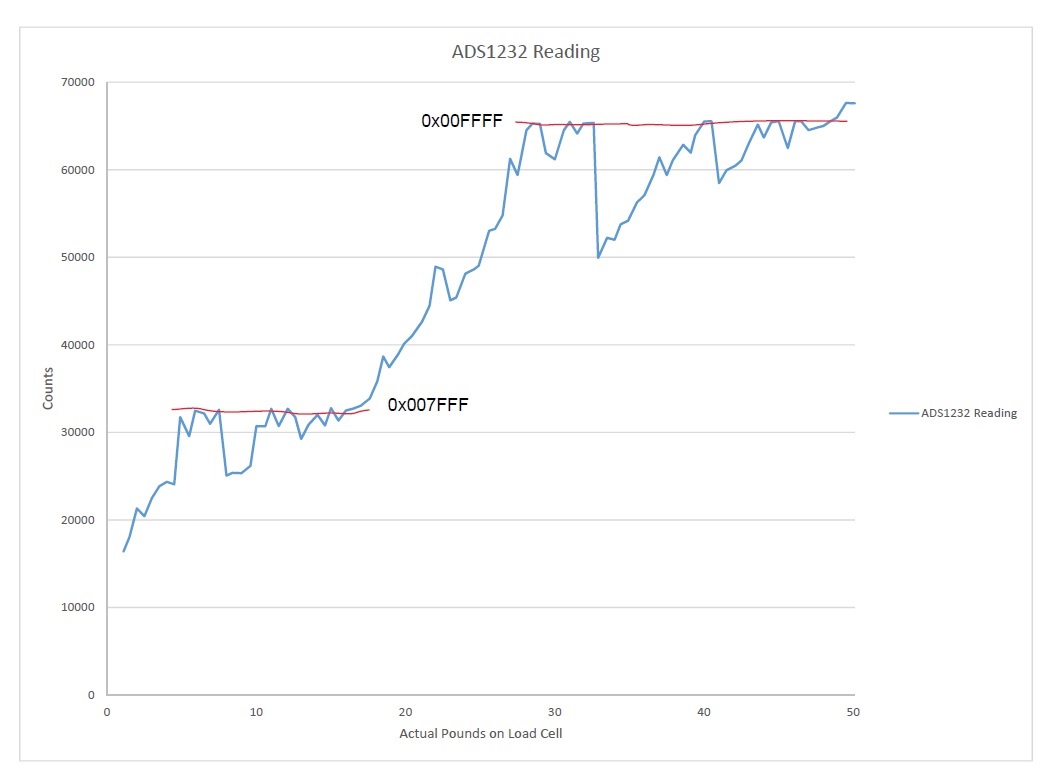Hello fellow Engineers,
I have been designing analog circuits for about 20 years, and I can say that I am about stumped. I would sincerely appreciate your help/input.
I am using an ADS1232 and have basically taken the front end circuit from the Evaluation board (ADS1232REF). The exact circuit I am using is below:
For full disclosure, I am using a Common-Mode choke (Murata-DLW5BTM102TQ2K) to separate the Analog supply from the Digital.
My issue is really unusual. My analog input off of the load cell (in mV) is perfectly linear all the way up to the chip pins. Once the signal gets into the chip, it is a different story. The digital output is having issues "rolling over" to the next Most Significant Bit. It will roll over from 0x003FFF to 0x004000. It seems to be linear up until about 0x005FFF. It will roll over from 0x005FFF to 0x007***, and fumble around with the bits while the pressure rises up to 0x007FFF and then it will double back to 0x007C00 until you finally run it up to 0x007FFF again, and then the MSB will finally increment so that you get 0x008000. After this, it seems to be linear up to 0x00EFFF and then it strays from the path again between 0x00FFFF. Eventually it will roll over to 0x010000, but this is about the limit of my load cell.
I have hard-wired an external reference voltage into it with no success. I have changed the input capacitor (C45) with no change, but the signal is fine there on a scope or DVM. I've tried changing the gain and the speed with no success. I initiate a zero offset calibration at start-up and don't again after that. Again, I am using the same components as on the demo board for the most part.
I would appreciate the input on this issue. I have ordered an ADS1232REF to evaluate against my circuit, in case there is a difference.
Thanks so much for the input!!!
Cheers!
Jonathan
Honortronics Inc.




